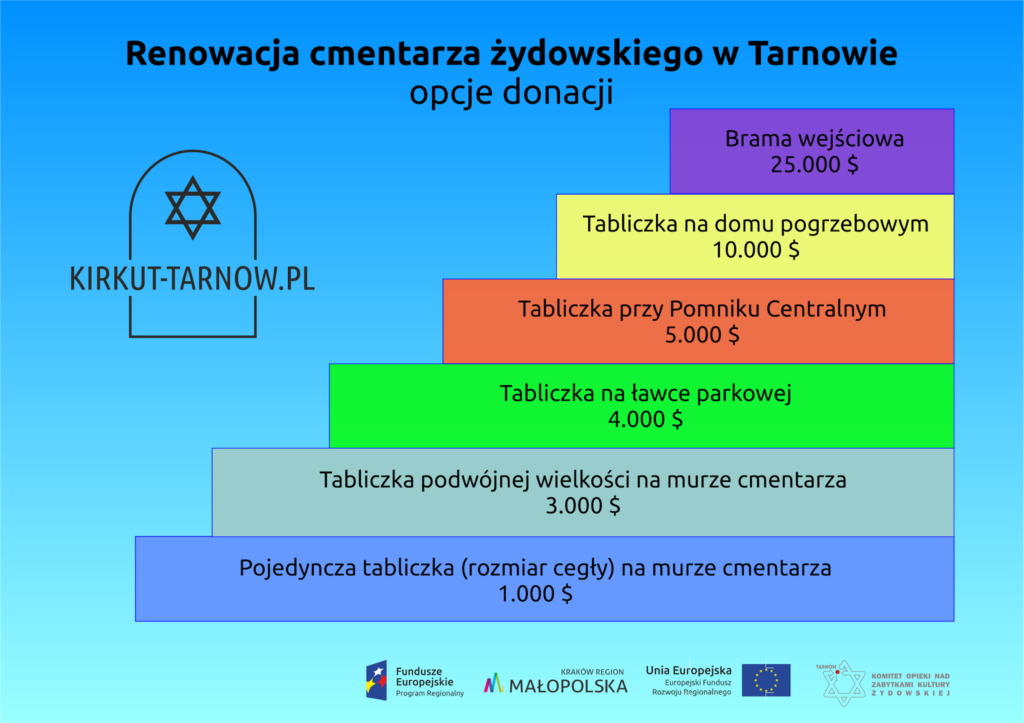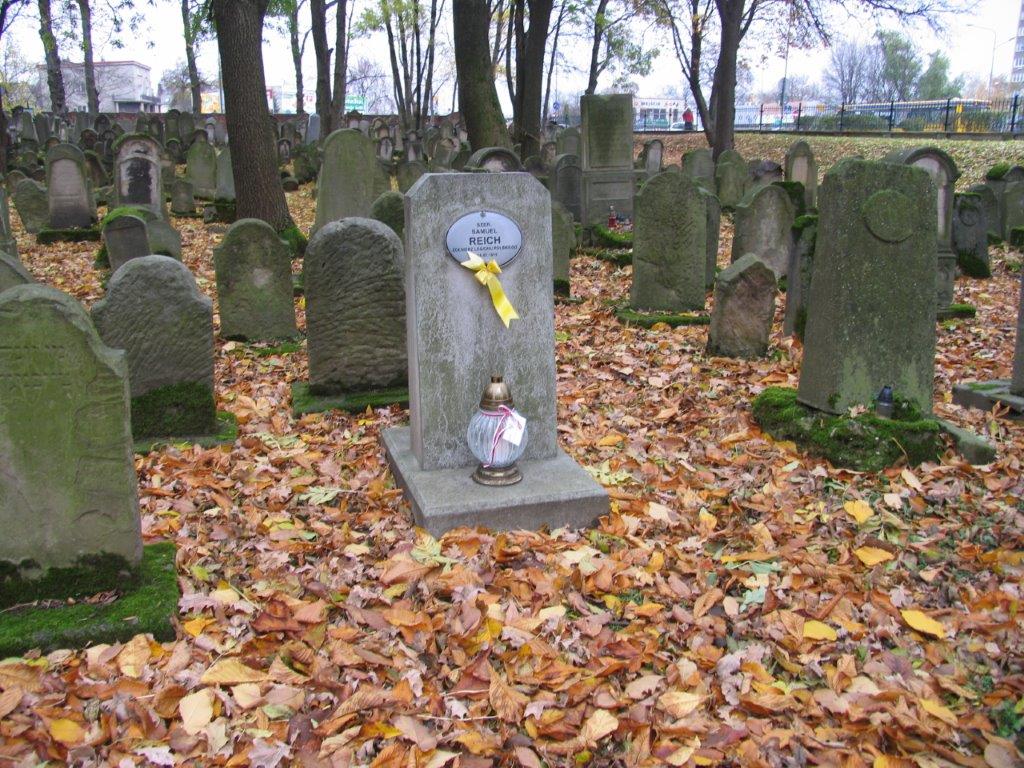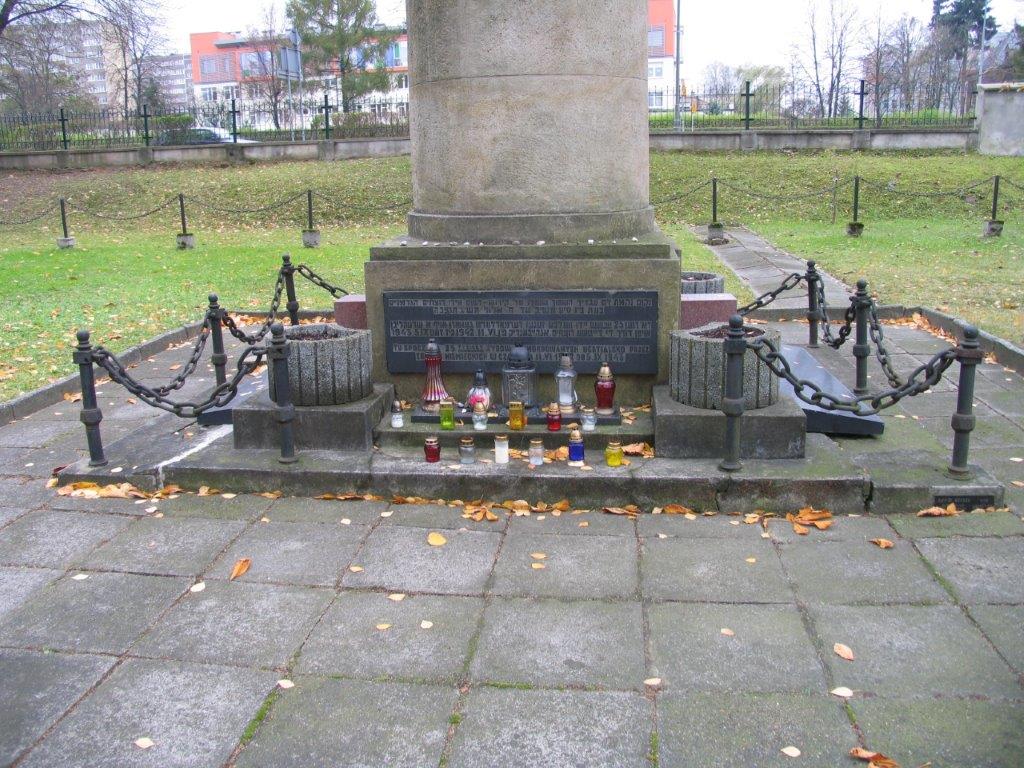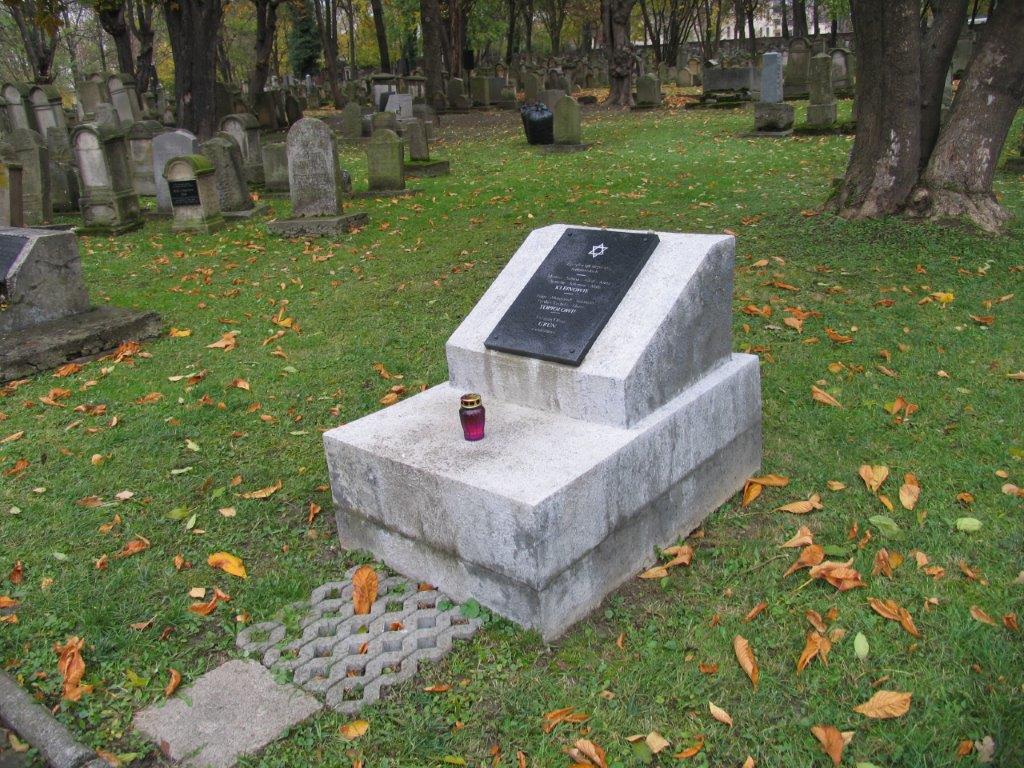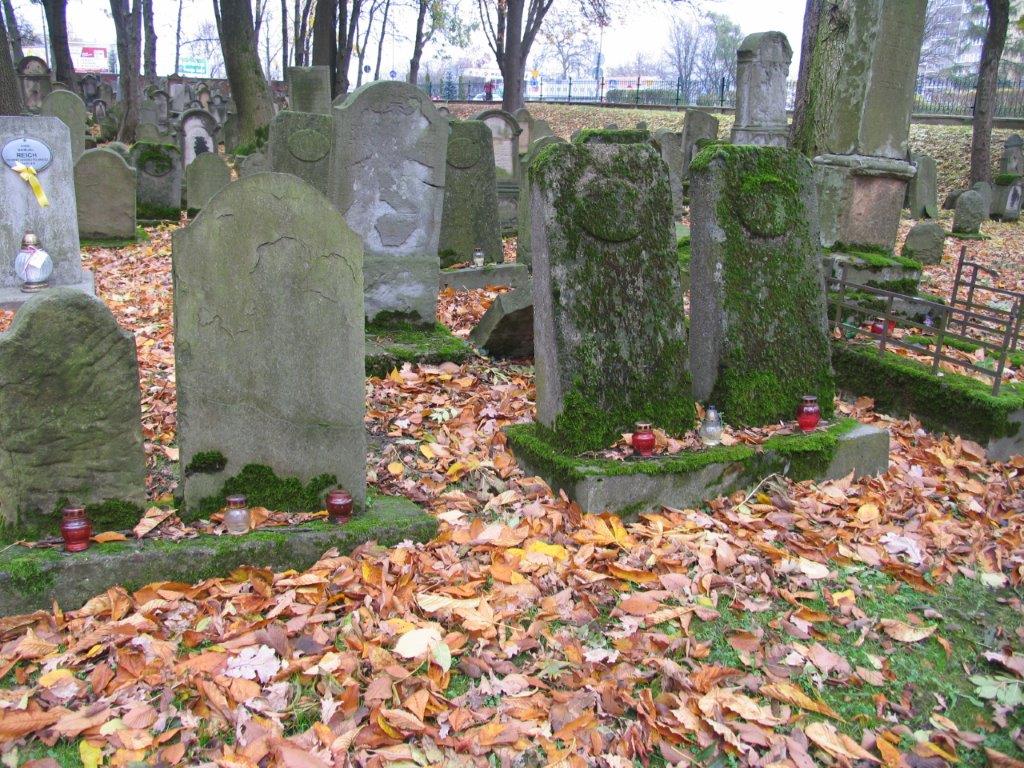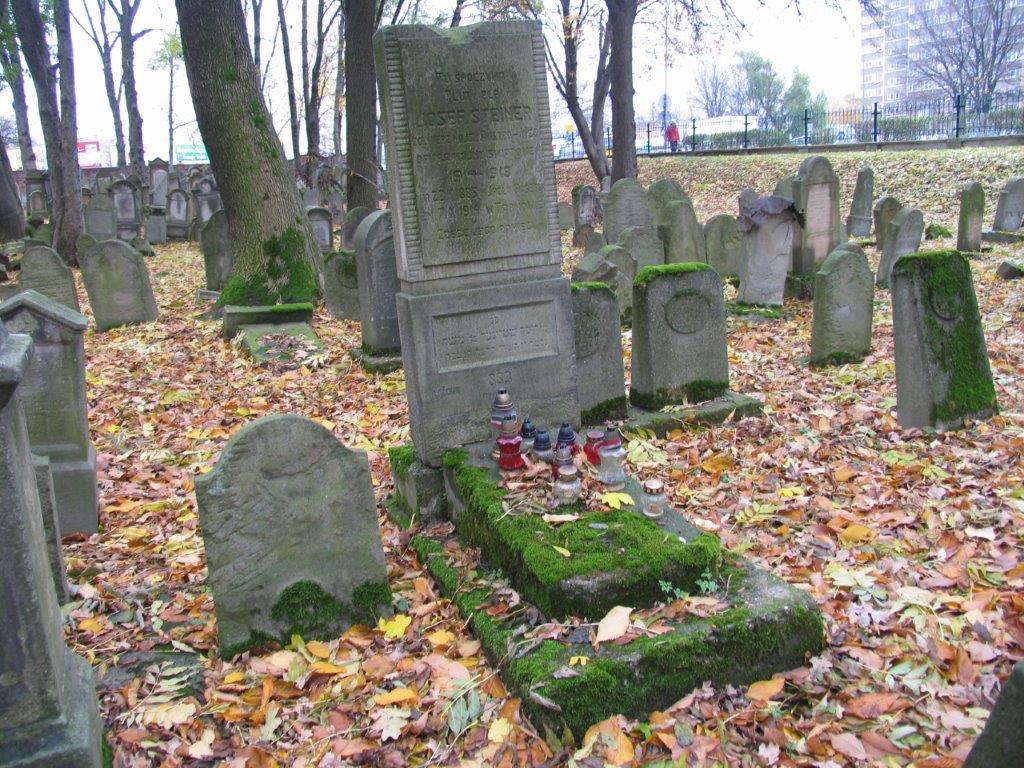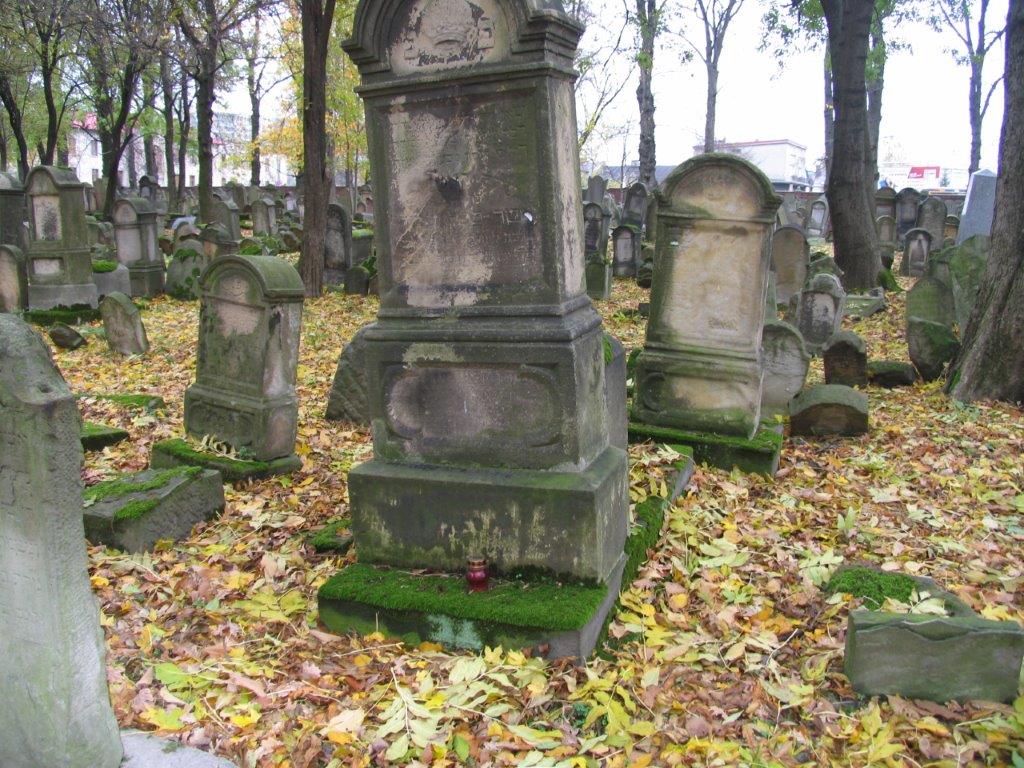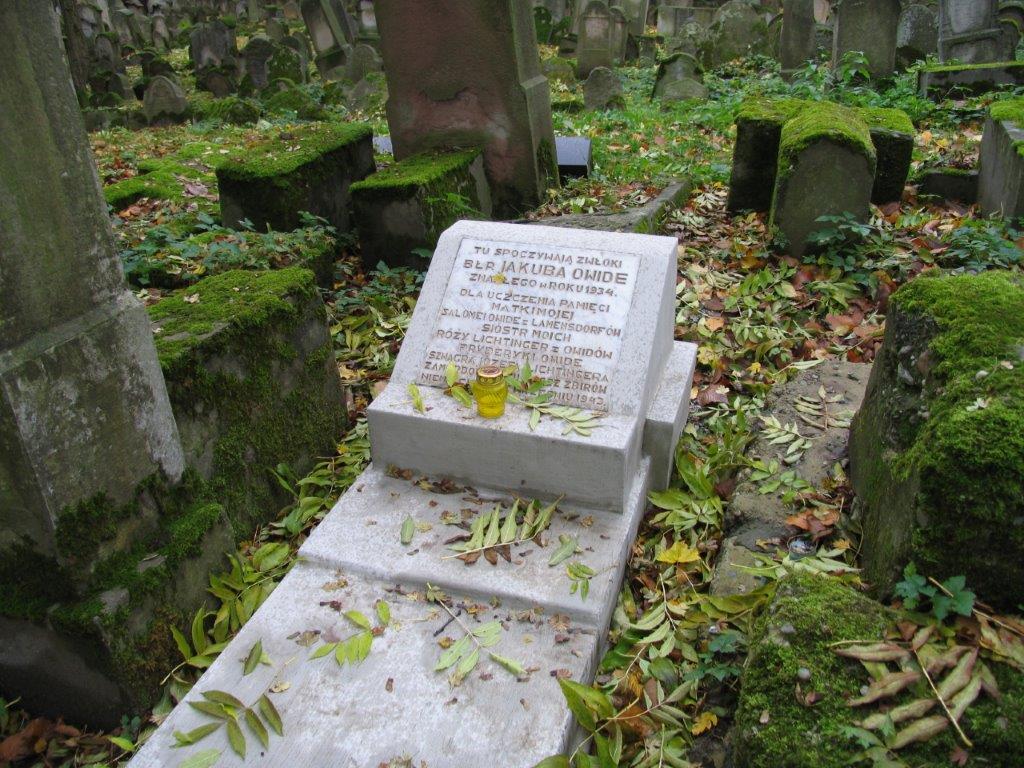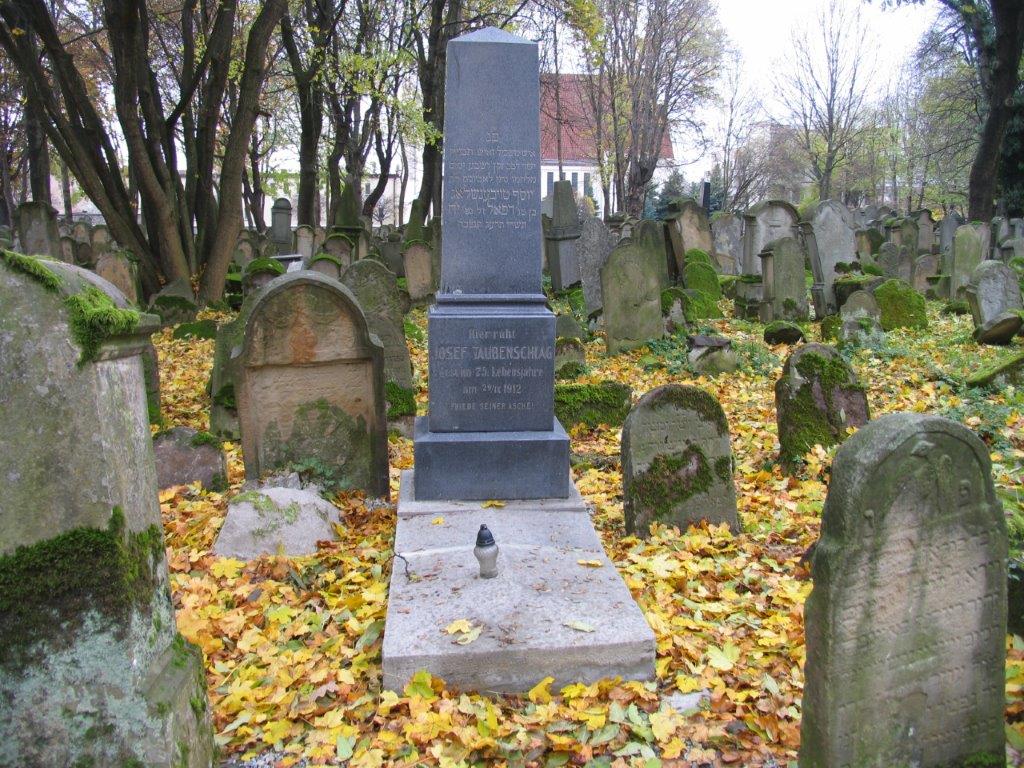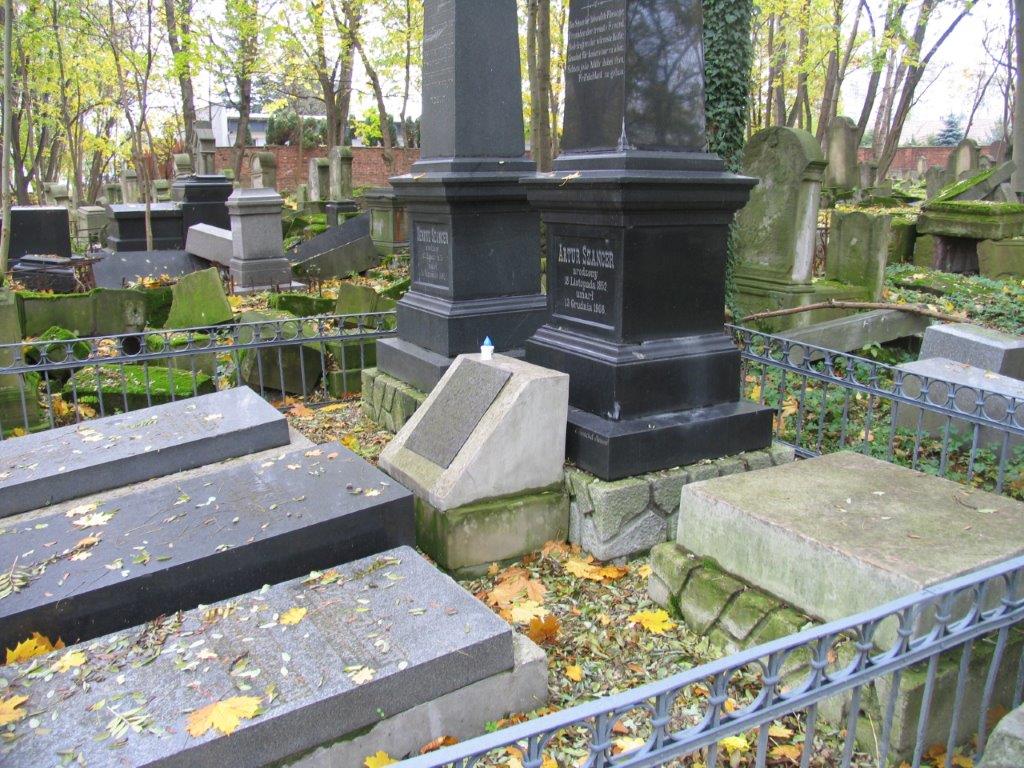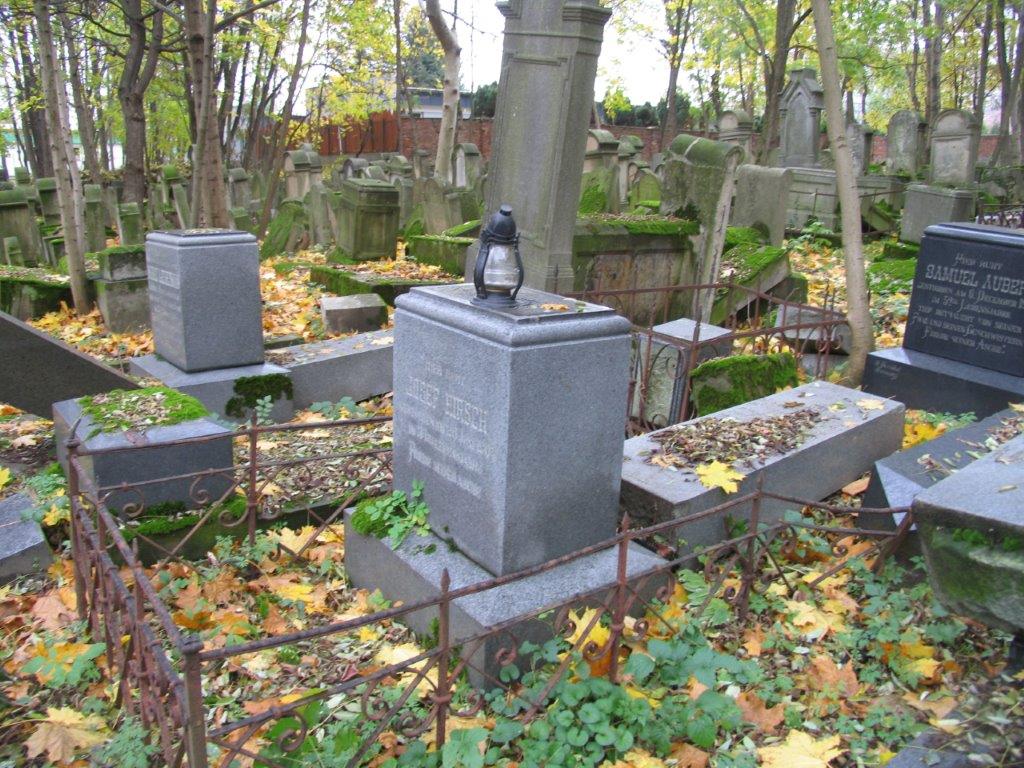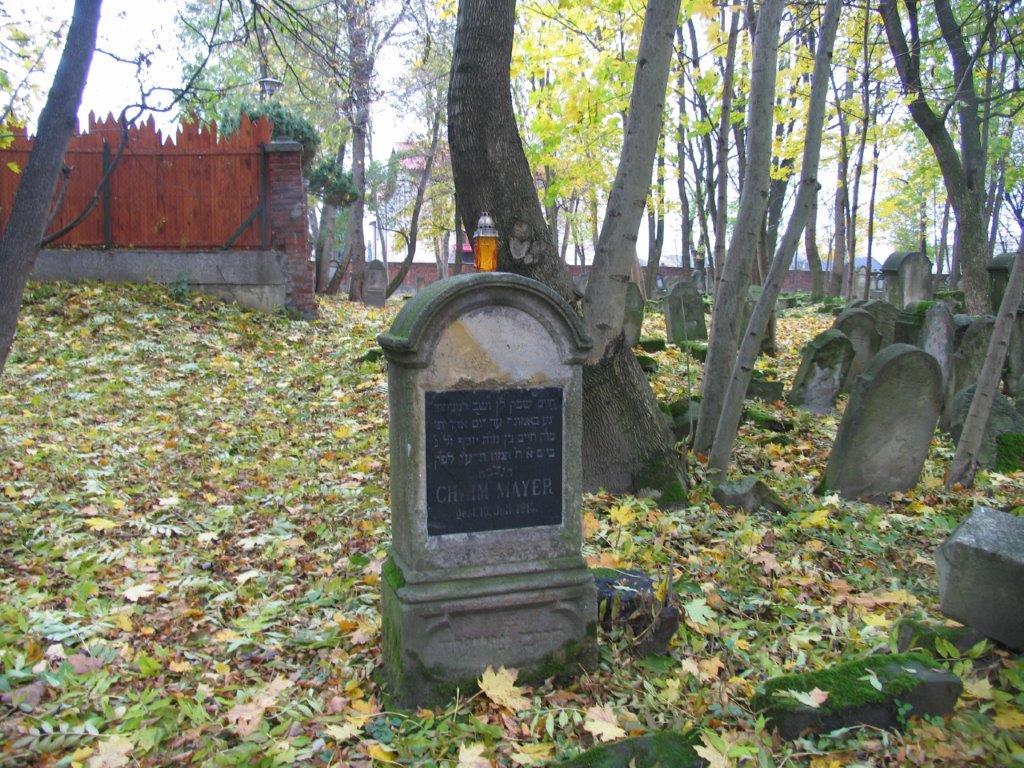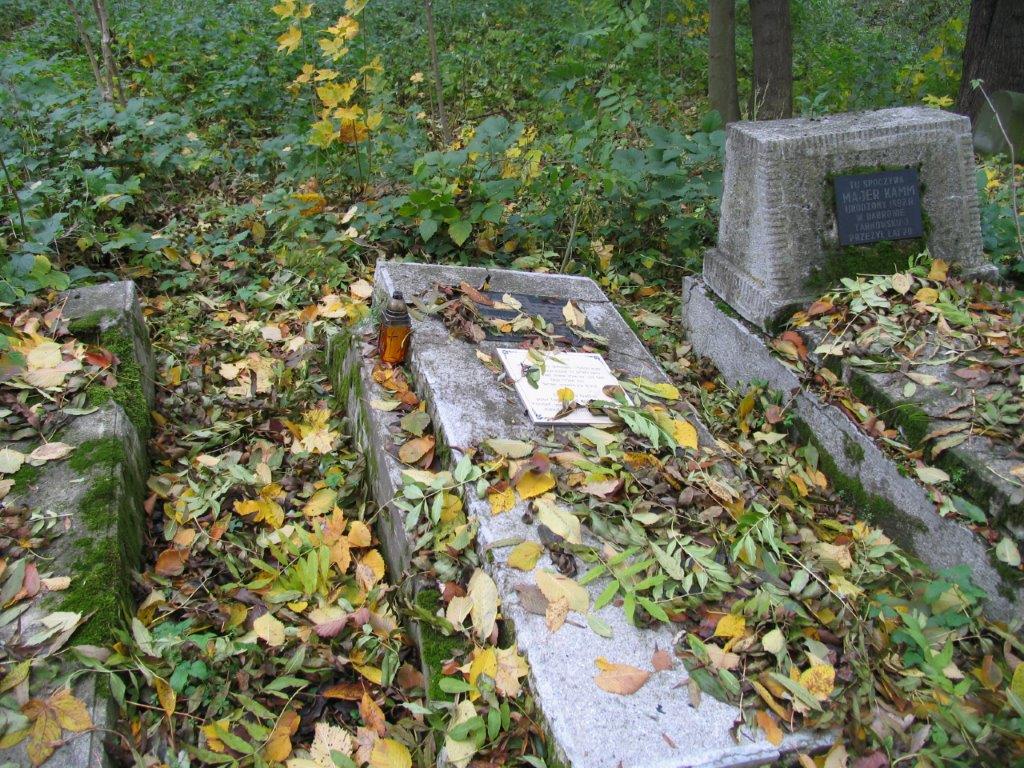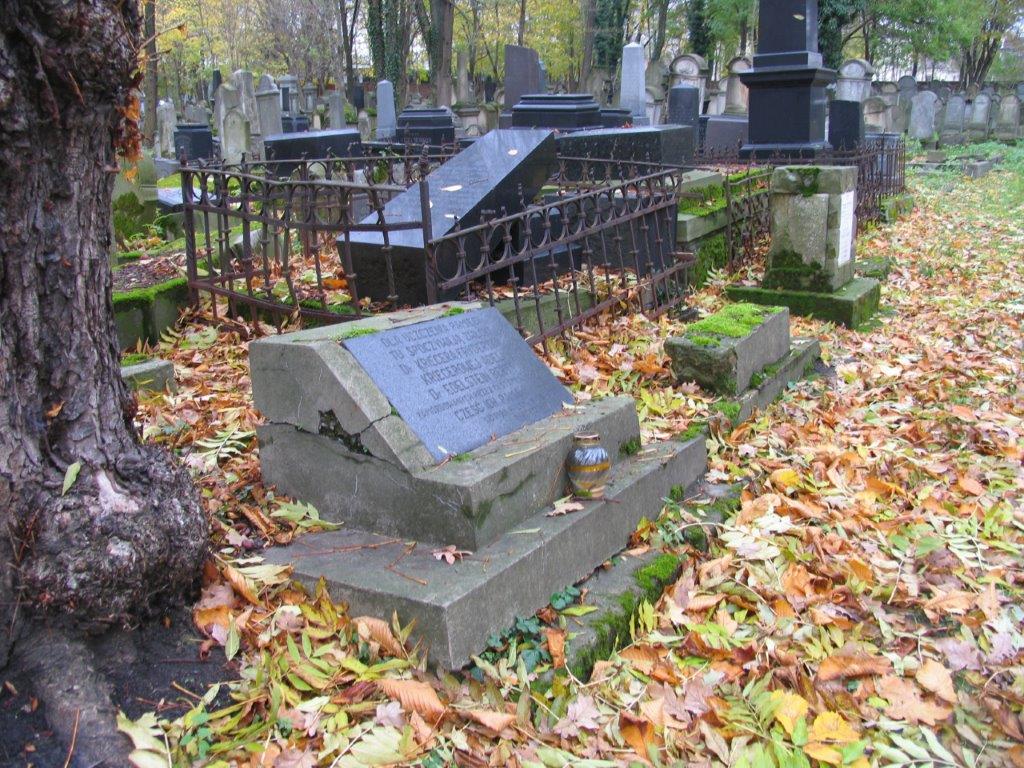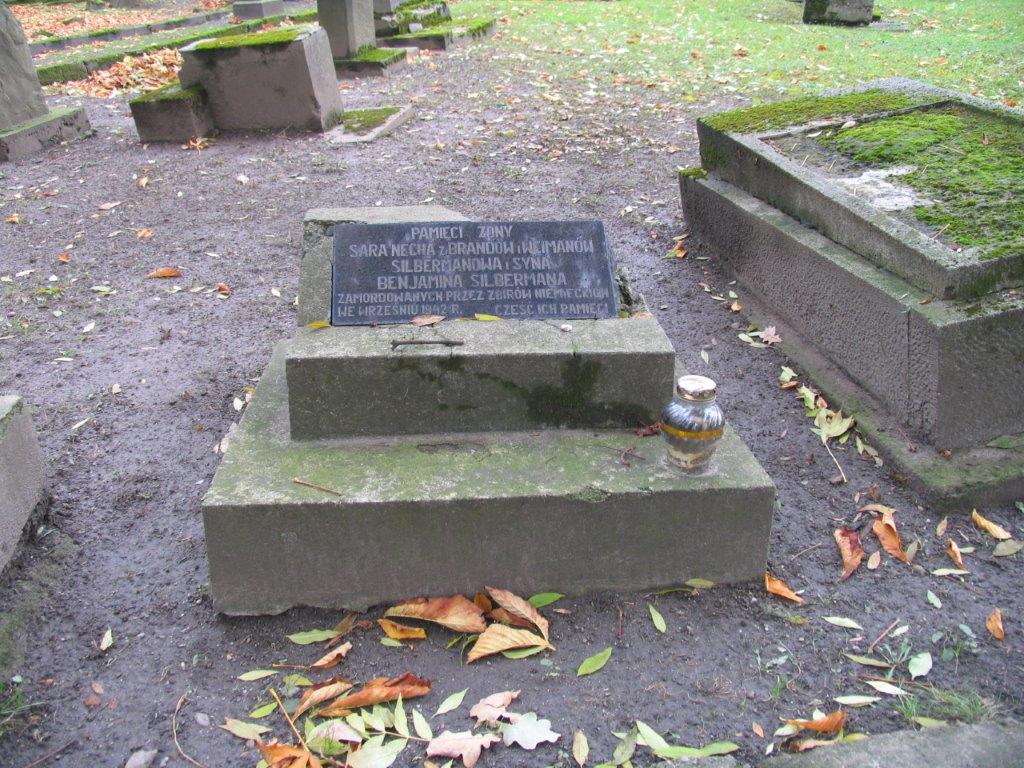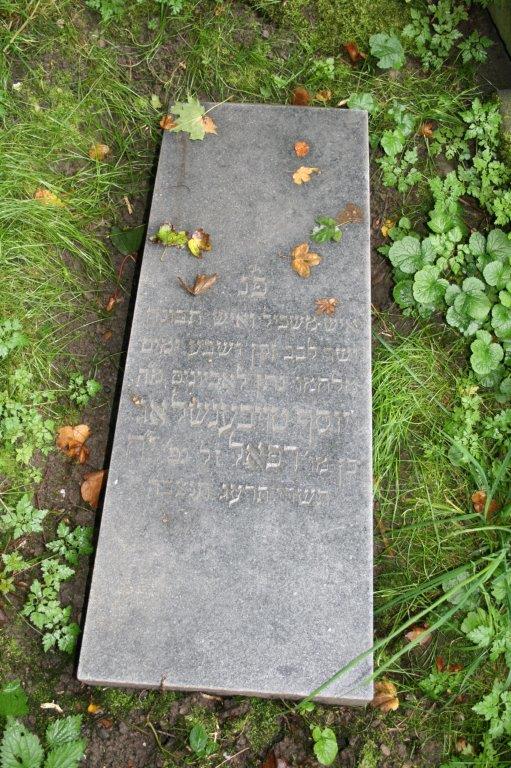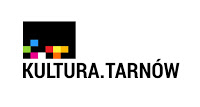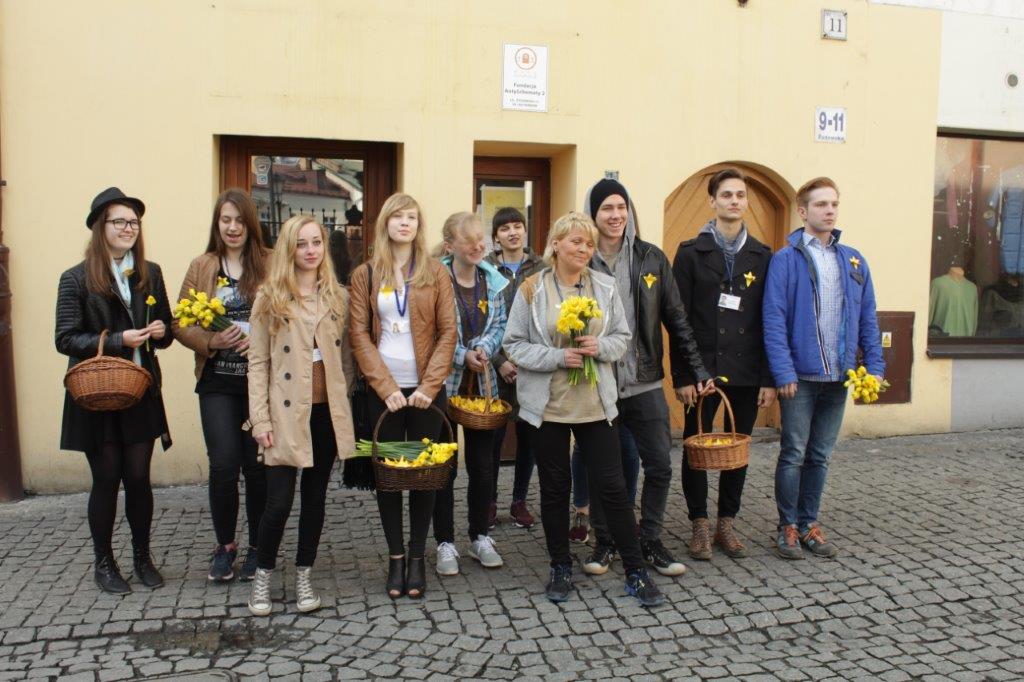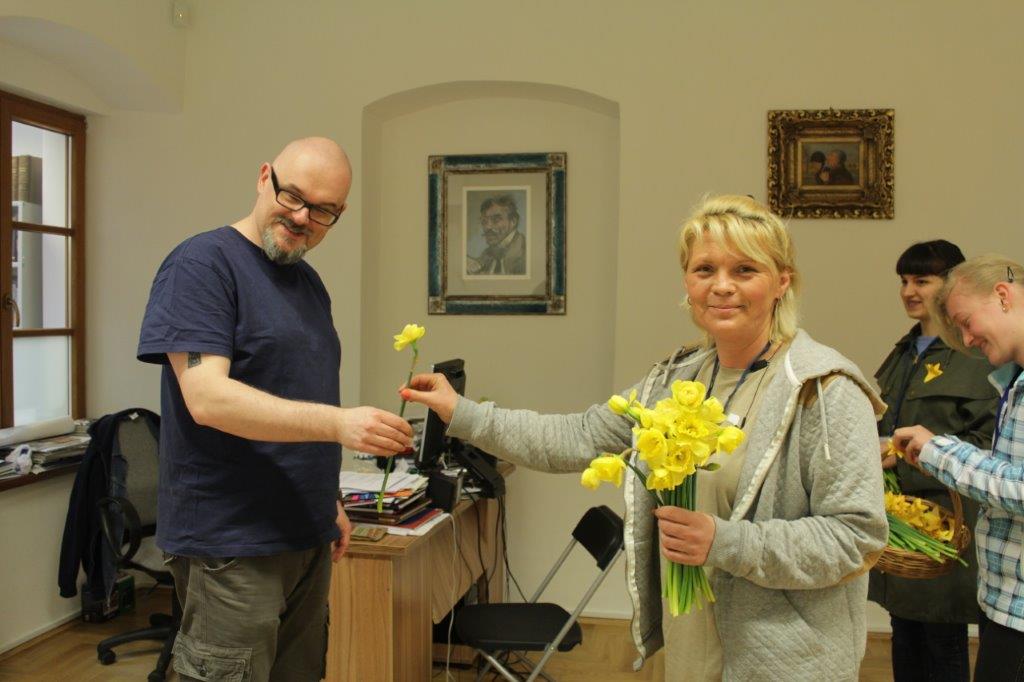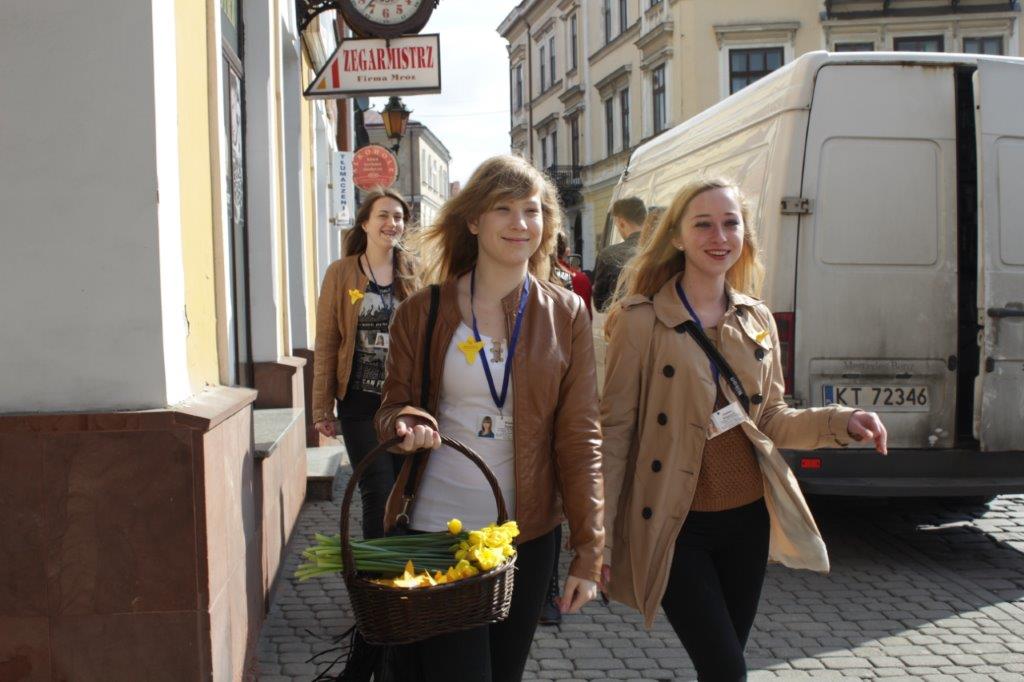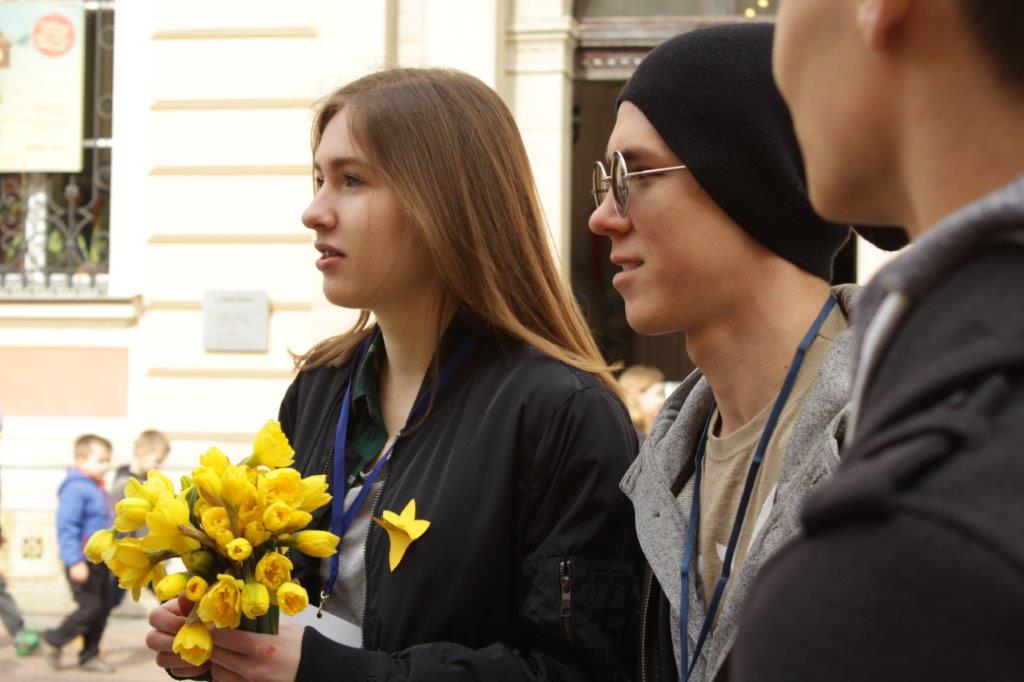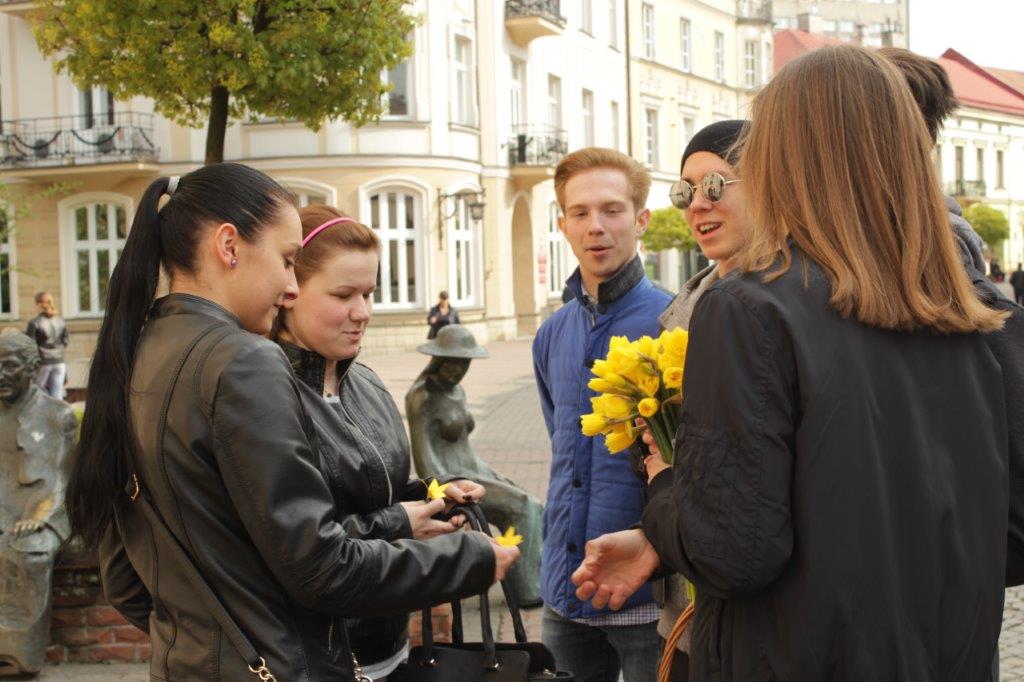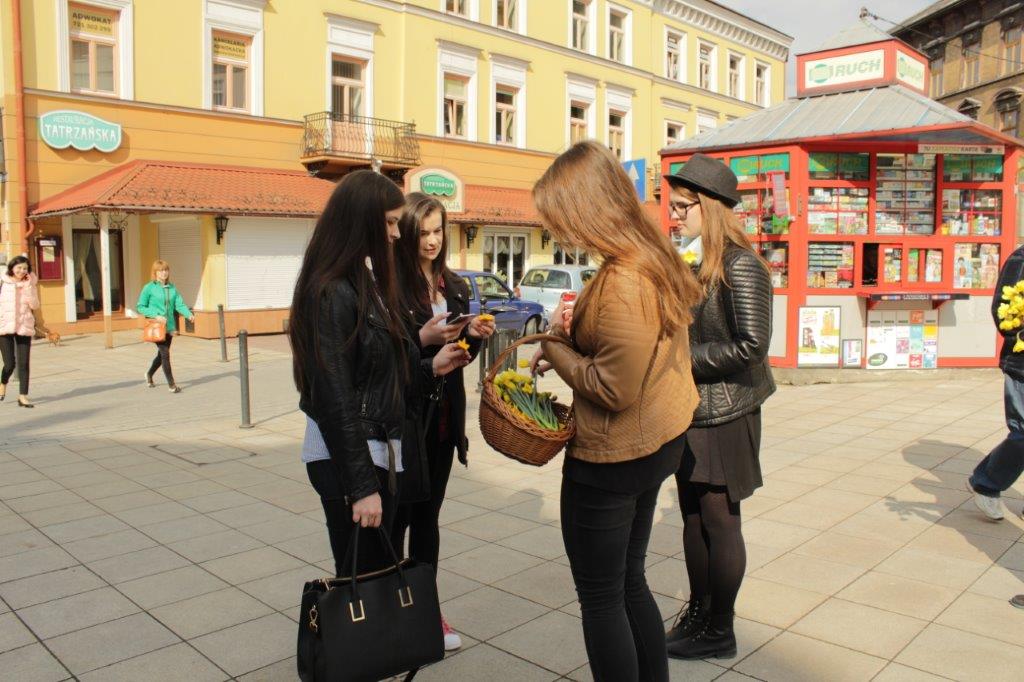Tag: Tarnów
Galicjaner Sztetl 2017 – program w języku polskim
Miło nam zaprezentować tegoroczny program Dni Pamięci Żydów Galicyjskich Galicjaner Sztetl. W tym roku organizatorzy wydarzenia (Muzeum Okręgowe w Tarnowie, Miasto Tarnów i Komitet Opieki nad Zabytkami Kultury Żydowskiej w Tarnowie) pragną szczególnie podziękować za włączenie się w organizację tego tarnowskiego i galicyjskiego święta kultury – naszemu przyjacielowi, Gerremu Vinebergowi – Mina Collection, Elizabeth Szancer i Jill Leibman oraz Wszystkim Wspaniałym Członkom facebookowej grupy Jewish.Tarnow.
PROGRAM GALICJANER SZTETL 2017
16-19 czerwca 2017
16 czerwca (piątek)
- 12:00 Zbylitowska Góra, Spotkanie modlitewne przy Pomniku Ofiar Nazizmu
- 13:00 Tarnów, Marsz Pamięci z byłego Pl. Magdeburskiego (ul. Goslara) na Cmentarz Żydowski
- 18:00 Tarnów, Otwarcie wystawy malarstwa Miny Nath (Galeria Sztyler)
- 20:30 Tarnów, wieczerza szabatowa (Galeria Sztyler)[1]
17 czerwca (sobota)
- 10:00 Szachrit: poranna modlitwa pod bimą
- 17:00 Dąbrowa Tarnowska, koncert: Kapela Brody (Synagoga)
- 20:30 Tarnów, otwarcie wystawy pod bimą „Tarnowscy Żydzi” oraz wystawy fotografii Tomasza Łabuza „Kamienne historie” (Skwer Starej Synagogi)
- 21:00 Tarnów, Koncert Pod Bimą: Olga Avigail & Zespół Tango Attack, hawdala: zakończenie szabatu
18 czerwca (niedziela)
- 11:00 – 13:00 Otwarta Brama Cmentarza – zwiedzanie tarnowskiego Cmentarza Żydowskiego z przewodnikiem
- 16:00 Ciężkowice, koncert: Olga Avigail & Zespół Tango Attack
- 19:00 Dębno, koncert: Olga Avigail & Zespół Tango Attack
- 21:00 Tarnów, Koncert Pod Bimą: Kapela Brody
19 czerwca (poniedziałek)
- 21:00 Tarnów, Koncert Pod Bimą: Krakowska Opera Kameralna ze spektaklem „Chatskele, Chatskele”
Czerwiec
Wystawa malarstwa Miny Nath – Galeria Sztyler
Czerwiec – wrzesień
Wystawa „Tarnowscy Żydzi”,
wystawa fotograficzne Tomasza Łabuza „Kamienne historie” – Skwer Starej
Synagogi – Wystawy pod Bimą
wystawa fotograficzne Tomasza Łabuza „Kamienne historie” – Skwer Starej
Synagogi – Wystawy pod Bimą
[1] Wejście
od Pasażu Tertila. Organizuje Gerald Vineberg – wstęp za specjalnymi
zaproszeniami.
od Pasażu Tertila. Organizuje Gerald Vineberg – wstęp za specjalnymi
zaproszeniami.
Day of Souls
Jak co roku we Wszystkich Świętych i w Dzień Zaduszny otwieramy bramę
cmentarza żydowskiego, aby można było wejść
i zostawić świeczkę na opuszczonych żydowskich grobach. Dzisiaj, po dwóch dniach, na wielu grobach było jeszcze światło. Każdego roku więcej.
cmentarza żydowskiego, aby można było wejść
i zostawić świeczkę na opuszczonych żydowskich grobach. Dzisiaj, po dwóch dniach, na wielu grobach było jeszcze światło. Każdego roku więcej.
As every year, on the Day of Saints and Day of Souls we’re opening gate of the Jewish cemetery. People can enter and leave a candle on abandoned
Jewish graves. Today, after two days, on graves still was many lights. Every year more and more.
Jewish graves. Today, after two days, on graves still was many lights. Every year more and more.
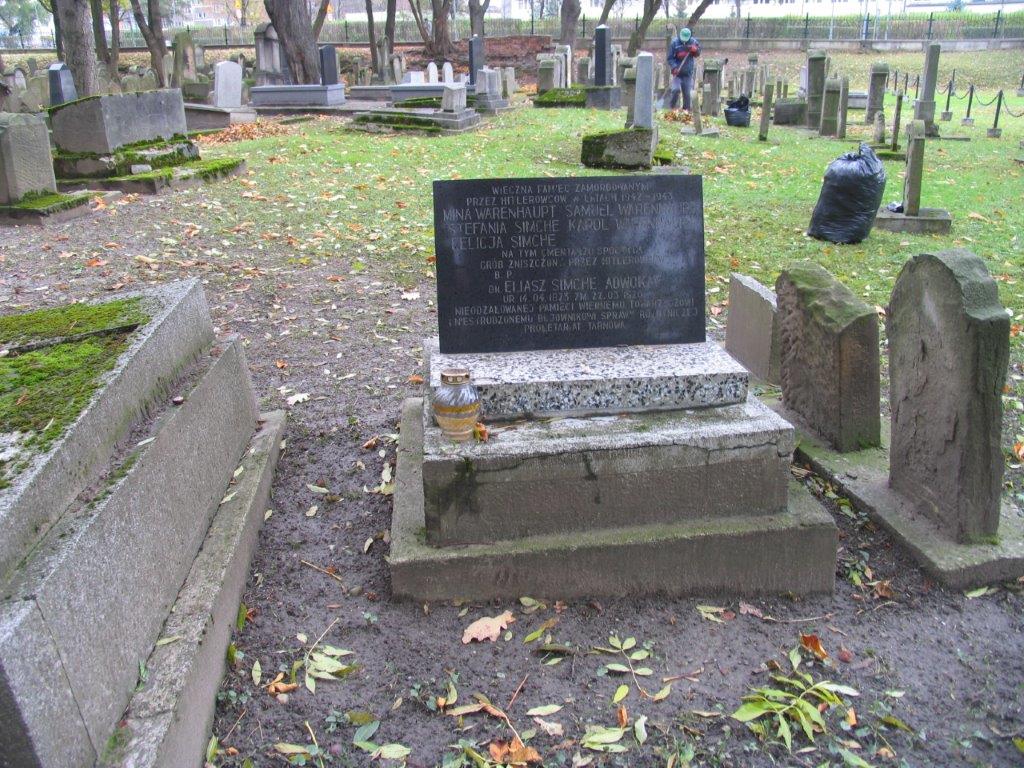 |
| Fot. Adam Bartosz, 2016. |
Dan Oren founded a renovation
Professor Dan Oren from Connecticut (USA) with his wife Jeannet and several
family members visited Tarnow cemetery in July this year. Unexpectedly they
founded a fallen piece of tombstone with the name Josef Taubenschlag.
They founded out that Josef Taubenschlag was uncle of prof. Dan Oren and
a distant relative of his wife. Family decided to outsource the
renovation of the monument and in October monument with our stood
renovated with help of Committee for the Protection of Jewish Tarnów. Please see some photos before and after renovation.
family members visited Tarnow cemetery in July this year. Unexpectedly they
founded a fallen piece of tombstone with the name Josef Taubenschlag.
They founded out that Josef Taubenschlag was uncle of prof. Dan Oren and
a distant relative of his wife. Family decided to outsource the
renovation of the monument and in October monument with our stood
renovated with help of Committee for the Protection of Jewish Tarnów. Please see some photos before and after renovation.
Profesor Dan Oren z Connecticut (USA)
wraz z żoną Jeannet i kilku członkami rodziny odwiedzili tarnowski cmentarz w
lipcu tego roku. Niespodziewanie trafili na zwalony fragment nagrobka z
nazwiskiem Josef Taubenschlag. Okazało się że to wujek Dana Orena i daleki
krewny jego małżonki. Postanowili zlecić remont pomnika, i oto w połowie
października pomnik z pomocą naszego Komitetu stanął odnowiony.
wraz z żoną Jeannet i kilku członkami rodziny odwiedzili tarnowski cmentarz w
lipcu tego roku. Niespodziewanie trafili na zwalony fragment nagrobka z
nazwiskiem Josef Taubenschlag. Okazało się że to wujek Dana Orena i daleki
krewny jego małżonki. Postanowili zlecić remont pomnika, i oto w połowie
października pomnik z pomocą naszego Komitetu stanął odnowiony.
See photos before and after renovation:
Galicianer Shtetl – program (updated)
(Bellow you will find an English text)
Galicjaner Sztetl.
Dni Pamięci Żydów Galicyjskich
Organizatorzy:
Muzeum Okręgowe w
Tarnowie
Tarnowie
Komitet Opieki nad
Zabytkami Kultury Żydowskiej w Tarnowie
Zabytkami Kultury Żydowskiej w Tarnowie
9 – 16 czerwca 2016
Pod patronatem
Prezydenta Miasta Tarnowa
Prezydenta Miasta Tarnowa
Partner projektu:
Gmina Tarnów, Fundacja Antyschematy2
Gmina Tarnów, Fundacja Antyschematy2
Program
Czwartek 9 czerwca:
12:00 Spotkanie modlitewne w
Lesie Buczyna w Zbylitowskiej Górze
Lesie Buczyna w Zbylitowskiej Górze
18:30 Wcielenie – otwarcie wystawy rysunków Yaacova Yaacobova z Izraela
(Galeria BWA, Park Strzelecki)
(Galeria BWA, Park Strzelecki)
20:30 Odsłonięcie tablicy
upamiętniającej rodzinę Kwadratsteinów (Muzeum, Rynek 3)
upamiętniającej rodzinę Kwadratsteinów (Muzeum, Rynek 3)
21:00 Koncert Pod Bimą: Pushkin Klezmer Band z Kijowa
Piątek 10 czerwca:
17:00 Permeation-Przenikanie – otwarcie wystawy fotografii będących
syntezą zdjęć archiwalnych i aktualnych w ramach projektu polsko-izraelskiego
młodzieży z V LO im. Janusza Korczaka w Tarnowie i uczniów Harel High School
spod Jerozolimy (Tarnowskie Centrum Kultury, Rynek 5)
syntezą zdjęć archiwalnych i aktualnych w ramach projektu polsko-izraelskiego
młodzieży z V LO im. Janusza Korczaka w Tarnowie i uczniów Harel High School
spod Jerozolimy (Tarnowskie Centrum Kultury, Rynek 5)
19:00 Pushkin
Klezmer Band z Kijowa – koncert (Gminne
Centrum Kultury w Żabnie)
Klezmer Band z Kijowa – koncert (Gminne
Centrum Kultury w Żabnie)
Sobota 11 czerwca:
19:00 Bruno Schulz – film dokumentalny, reż. Adam Sikora, scen. Agata
Tuszyńska (Muzeum, Rynek 3)
Tuszyńska (Muzeum, Rynek 3)
Niedziela 12 czerwca:
11:00-13:00 Otwarta Brama
Kirchołu – oprowadzanie po żydowskim cmentarzu
Kirchołu – oprowadzanie po żydowskim cmentarzu
21:00 Koncert Pod Bimą: Ichcak
Horovitz, kantor z Krakowa
Horovitz, kantor z Krakowa
Czwartek 16 czerwca:
21:00 Koncert Pod Bimą, zespół Anashim z Bielska-Białej
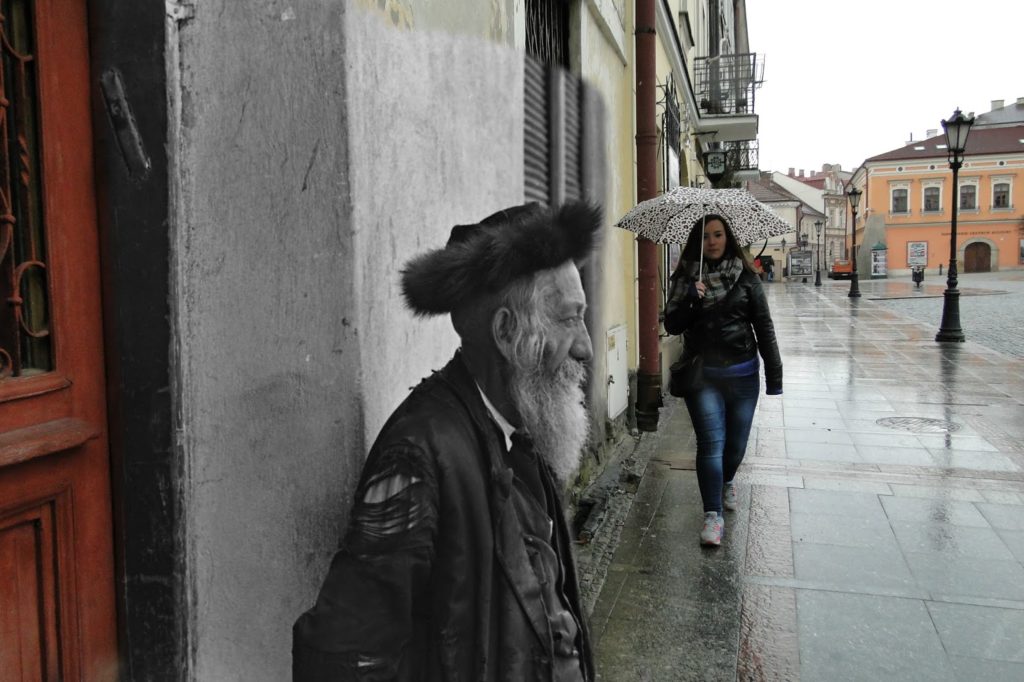 |
| Fot. Beata Fura/archiwum Muzeum Okręgowego w Tarnowie, 2015 |
Projekt realizowany przy wsparciu finansowym Województwa Małopolskiego/
The project is made with financial support of Małopolska Voivodship
Galicjaner Sztetl. Galitzjaner Shtetl
Organizers:
Committee for Protection Jewish Heritage in
Tarnów
Tarnów
Regional
Museum in Tarnów
Museum in Tarnów
June 9 –
16, 2016
16, 2016
Program
Thursday, June 9:
12:00 Common Jewish and Catholic prayer in the
Buczyna Forest in Zbylitowska Góra (mass graves)
Buczyna Forest in Zbylitowska Góra (mass graves)
6:30 p.m. Opening night for the exhibition of
drivings by Jakov Kaubov from Israel – Incarnation (Gallery of Art in Strzelecki Park)
drivings by Jakov Kaubov from Israel – Incarnation (Gallery of Art in Strzelecki Park)
8:30 p.m. Unveiling of the plaque dedicated to
the memory of the Kwadratstein family (Museum, Rynek 3)
the memory of the Kwadratstein family (Museum, Rynek 3)
9:00 p.m. Under the Bimah Concert: Puskin
Klezmer Band from Kiev.
Klezmer Band from Kiev.
Friday, June 10:
5:00 p.m. Permeation-Przenikanie – the opening
night for the exhibition of photos and
memories of Tarnow survivors. Polish-Israeli project developed by students of
Janusz Korczak High School from Tarnow and Harel High School from Mevasseret Zion (Tarnow Culture Centre,
Rynek 5)
night for the exhibition of photos and
memories of Tarnow survivors. Polish-Israeli project developed by students of
Janusz Korczak High School from Tarnow and Harel High School from Mevasseret Zion (Tarnow Culture Centre,
Rynek 5)
7:00 p.m. Pushkin Klezmer Band
from Kiev – concert (Commune Culture
Centre in Żabno)
from Kiev – concert (Commune Culture
Centre in Żabno)
Saturday, June 11:
9:00 p.m. Bruno Schulz – documentary movie
directed by Adam Sikora, screenplay by Agata Tuszyńska (Museum, Rynek 3)
directed by Adam Sikora, screenplay by Agata Tuszyńska (Museum, Rynek 3)
Sunday, June 12:
11:00 a.m. – 1:00 p.m. Open Gate to the Jewish
cemetery in Tarnów – guided tours.
cemetery in Tarnów – guided tours.
9:00 p.m. Under the Bimah Concert: Ichcak
Horovitz, cantor from Krakow
Horovitz, cantor from Krakow
Thursday, June 16:
Wolontariusze podczas Akcji Żonkile 2016
Wolontariusze Fundacji AntySchematy 2 włączyli się w akcję edukacyjno-memorialną Muzeum Historii Żydów Polskich POLIN i dzisiejszego dnia, w 73. rocznicę powstania w getcie warszawskim, podobnie jak młodzież w całej Polsce, rozdawała przechodniom żonkile. Były to żonkile papierowe, mozolnie wycinane, składane i sklejane przez nich już wcześniej oraz żywe, żeby pamięć nie kojarzyła się wyłącznie z papierem, dokumentem. Żywy żonkil to także symbol radości, wiosny, a Wolontariusze dzielą się swoją młodością, czasem i entuzjazmem, aby uczyć się, pomagać i przekazywać dalej jak ważna jest pamięć.
Poniżej reportaż fotograficzny z wydarzenia (fot. N. Gancarz).
Mezuzah – there was a Tarnów shtetl here
 |
| The bima, remains of the Oldd Synagogue, destroyed in 1939 |
Implementing the Mezuzah project, which is of an educational character, it should be noted how the town Tarnów once was, when Jews that lived here since the end of nineteenth century, constituted almost half the population of this town.
For the Jewish Tarnów was economic power. Some of the industries or branches of craftsmanship as a whole were dominated by Jews. Also, most of the houses on the main streets of the city belonged to them. Nearly 90% of the houses in the streets: Wałowa, Bernardyńska, Brodzińskiego, Goldhammer, Nowa, Szpitalna, Koszarowa, Szeroka, Burku – these were Jewish houses. Almost 100% Jewish streets were: Lwowska, Żydowska, Wekslarska. The Jews were the owners of more than 80% of stores. Their participation in enterprises shaped, depending on the industry, from 50 to 90%. In areas such as: shoe upper makings, glass industry, furrier – there were no Christians.
Until World War I, Tarnów was the largest in the Austro-Hungarian hat-production center entirely dominated by the Jewish manufacturers. Felt for hats was made by labels such as Meira Zylbersztajn, Herman Klajn as well as Kinberg and Wajs. Thousands of their products were exported to Balkan countries. Even after the war the industry still employed over 600 people.
Tarnów was the Jewish clothing industry, which in the twenties consisted of more than 60 companies. For clarity, it should be added that amongst them there were small establishments employing just a few people, including the owners’ families. Among these establishments there were 32 tailoring companies, 5 women’s clothing, 10 hat making, 7 lingerie, 3 corsetry.
The garment industry, the pride of the Jewish industry in Tarnów had a rich history in the beginning of which is Rajzla Rubin. In the mid-nineteenth century she dealt with the purchase of old clothes, which eventually started to bring them from Budapest herself. Around 1860, she herself started to sew Zeug trousers and jackets, selling them wholesale. Employing a number of sons and sons-in-law, this resourceful woman organized a developed industry in half a century, employing hundreds of peoplebefore1939.
Companies such as Zelig Faust, Markus, David Feld, A.L. Sztajner – reached with their goods the borders of the Austro-Hungarian monarchy. Before World War I a modern factory belonging to Shaul Brandsteatter was the first company in Tarnów on the markets of Serbia, Bulgaria and Turkey. This industry declined during the crisis of the early thirties. Number of enterprises in the town declined and most companies employed only 2-4 people. It was then that hat industry disappeared completely. Rebuilt in the following years, the clothing industry, before the outbreak of World War II employed more than 3,000 people, not counting the cottagers.
A lot of people in the field of science and culture, coming from Tarnów and the surrounding towns, grew up over the local dimension. Figure, little known among Christians and rather forgotten today,
Mordechai David Brandstaetter; a writer, poet, considered one of the fathers of modern Hebrew literature. During his life his works were translated into English, Russian, German and Yiddish. His grandson Roman Brandstaetter, is already known as a Polish poet, critic and translator.
Whence originated Leon Kelner professor of English Studies, famous in Vienna, Shakespeare interpreter. He wrote an encyclopaedia of Shakespeare and his textbooks were taught to students throughout Europe. After his death, the name of Kelner was given to one of the streets of Vienna. A Talmudist Joseph Engel was also known in the world. During his life he issued 20 volumes of interpretation of Scripture, and left to release another 90. Another prominent historian was Ignacy (Isaac) Schipper, professor of Judaic studies, economic history, the author of many, considered to this day, works of books and hundreds of articles. Another historian – to Salo Baron, known mainly in the United States as Chair of Columbia University in New York. He was succeeded by another Tarnovian Zwi Ankori (Wrobel). Adolf Rudnicki (Aaron Hirszhorn) – writer, prominent artists – Alexander Plutzer (painter), David Beker, Abba Fenichel, Henry Kerner (sculptors) also came from and lived here.
It was an important center of political life. Here were associates Theodor Herzl – Leon Kelner, Abraham Salz, Chaim Najger. Hence came haluce – founders of one of the first pioneer settlements in Palestine, Mahanaim village in Galilee (1898).
A socialist, then communist Karol Sobelson was not a very liked figure. When, however, as Karl Radek he became a close associate of Lenin and editor of the Truth and Izvestia (Prawda i Izwestia), people began to boast such a countryman.
Jewish Tarnów, however, first and foremost comprises of religious Jews. All shades and different forms of orthodoxy. From emancipated Zionists, who have to maintain ties with the rest of the Jewish community at least once a year on Yom Kippur visited a synagogue, through progressive Maskilim praying in a modern synagogue Tempel (Anna’s Street in Tarnów), to the casual religious Jews for whom the place of worship was a huge Nowa synagogue (Jubilee, named after Franz Joseph is situated in Nowa Street) and finally – probably they were the most numerous – the whole Hasidic crowd all shades and directions, followers of the tzaddikim in the whole territory of the Republic of Poland. Among the crowd Hasidims from Nowy Sącz and Bobowa naturally dominated. They were terribly conflicted with the Jews from Sadogóra. Minor groups prayed in little temples in Dzików, Bojanów, Ostrowiec, Bełz, Bielsko Biała and in other places, which are forgotten even in the memories.
It is impossible to describe in such an occurrence or to describe wider this former Jewish Tarnów. Let these few images be enough, as a sketch of that departed world. A world that after the destruction was mentioned by Abraham Chomet, the last chairman of the Jewish community in Tarnów, in Tel Aviv: Perhaps it was the only city in the Republic of Poland, where in the Town Council citizens of different nationalities and religions worked in peace and harmony for the common good. Just mention that the budget estimated for the years 1930 to 1931 was presented by the councilor Shlomo Goldberg. In this budget subsidies for the various cultural and social institutions for the amount of PLN 80 000 were established. This was 56% for Catholic institutions, 44% for Jews. At the same each ethnic group separately was left with the right to allocate these subsidies.
Could we imagine how these relations would have been arranged today – would it not be for the destruction of half of the community in Tarnów?
Adam Bartosz
See also:
• The project is co-financed from the funds of the EEA under the program „Citizens for Democracy” and the funds of the National Cultural Centre under the program Culture – Interventions 2015.
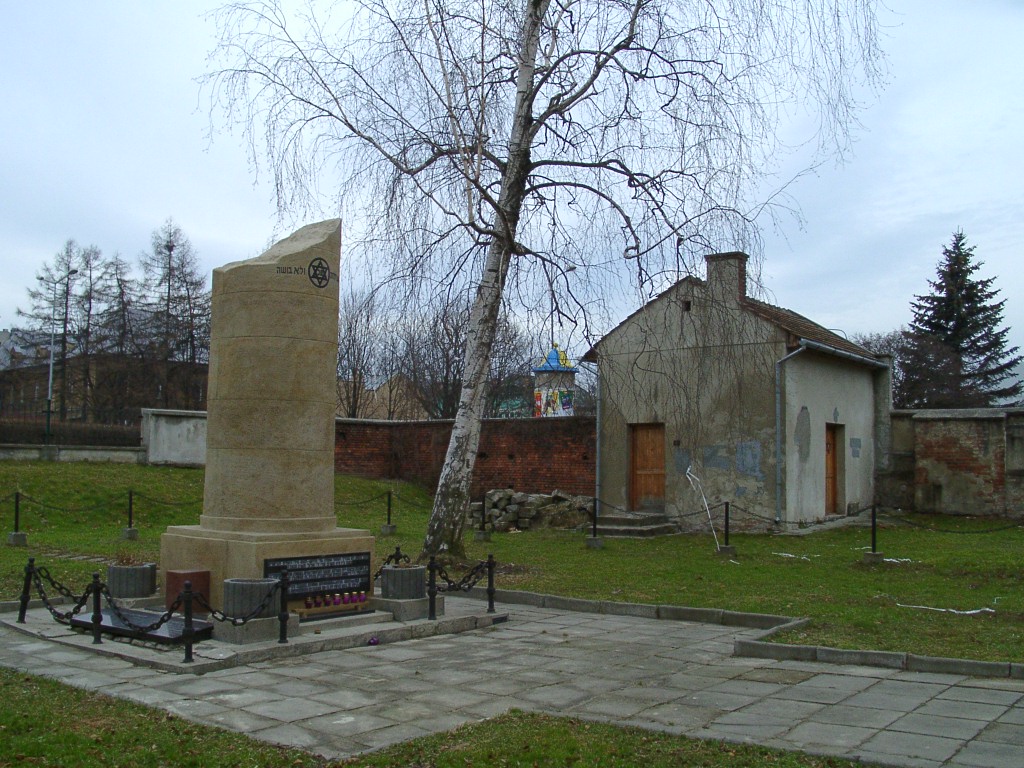 |
| Jewish cemetery in Tarnów with monument: the remains of column from New Synanogue, destroyed ib 1939, phot. Adam Bartosz |
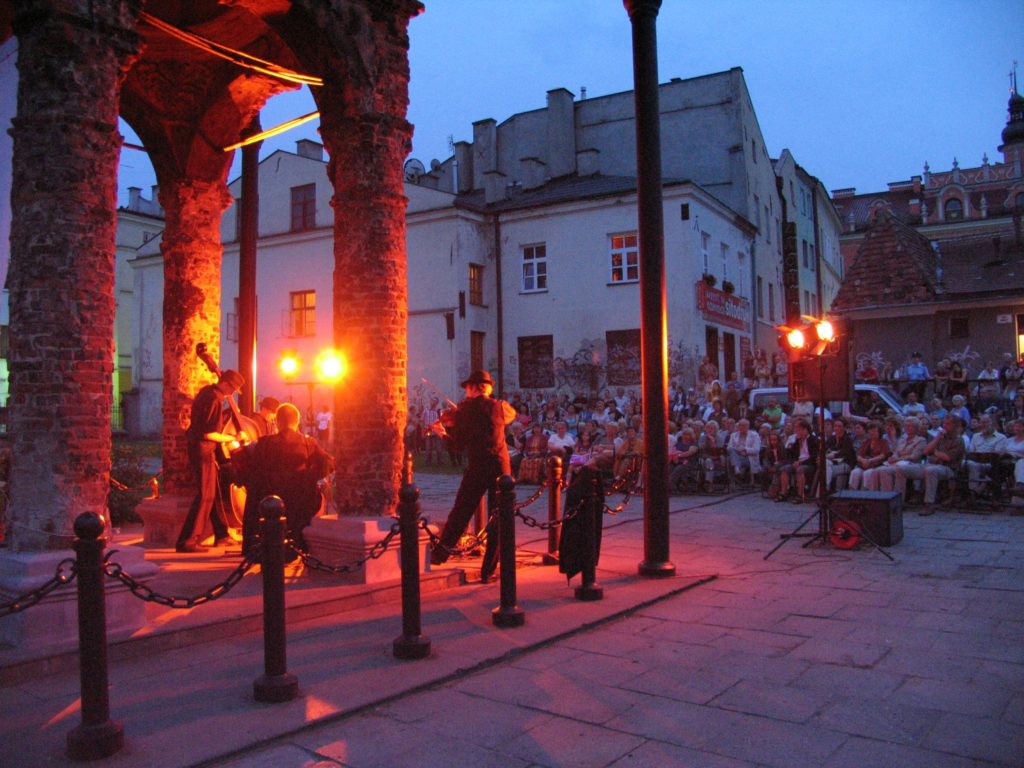 |
| Galicianer Shtetl, concert under the bima, phot. Adam Bartosz |
Mezuzah – the promotion of the remains of Tarnów shtetl
The Committee for Protection of Jewish Culture is currently fulfilling the project called Mezuzah, which has conducted nearly four decades of operations to restore the memory of the Jews of Tarnów. After years of repression of the memory of the Jewish presence in the landscape of the city, it began to slowly restore its remembrance. These activities are intensively conducted since the early 90s. In Kraj publishing, in 1992, an elaboration Tarnowskie Judaica was published in a few thousand of copies, while the local branch of PTTK issued a brochure guide to Jewish trail around Tarnów (1992) in English-language (1993), as well as English-language pamphlet The Jews in Tarnów region (1993). An extensive guide to the Jewish trail around Tarnów later lived to see a three-language issue (Polish, English, Hebrew) and a colourful art binding (ed. I 2000, ed. II 2002 ed. III 2007). Based on the text of this guide, in 2005, Town authorities affixed the described trail using information signs in Polish, English, and German.
Established contacts with Tarnów Jews in Israel and other countries, as well as with Jewish organizations, including tourist agencies have resulted in an increased tourist traffic of Jewish groups in Tarnów. Since the second half of the 90s, tours of Israeli youth, which more frequently involved the Tarnów program, were exploring a previously developed scheme (Warsaw – Majdanek – Krakow – Oswiecim), and the sightseeing made use of the guide issued by the Museum. An important role in the popularisation of Tarnów among the organizers of these trips plays the ambassador David Mordechai Palzur, who was born in Tarnow (as Marceli Plutzer), appointed to the post as the first after the resumption of Polish relations with Israel, in Warsaw (1986). Successive ambassadors have taken over his interest in Tarnów, which has been of great importance for the promotion of the town among Israelis. And with the initiative of the Museum/Committee Ambassador Palzur received in 2003 the title of Tarnoviae Merentis awarded by the Foundation of the Jan Tarnowski to Tarnów prominent residents for promoting the town abroad. Of the three aforementioned monuments associated with the presence of Jews in Tarnów (cemetery, bima, steam/mikvah) in a particular way the memory, promoting of two was managed to be restored: the cemetery and the bimah. The cemetery has become the primary place of particular care. Regardless of the sources of the funds the Comitee coordinates and oversees all work for the renovation and maintenance. Today, it is almost completely the area ordered in terms of green area. Since 2005, under an agreement with the local Department of Criminal sentenced are employed at the current streamlining work here from May to December. In 2005, the guide around the Jewish cemetery (Tarnów’s Jewish cemetery) was developed, and in the same year under the Małopolska Gościnna program, it was laid out to the cemetery trail (signs in Polish and English language) which have enabled self exploring. That same year, the memorial to the exterminated victims that stands at the gate of the cemetery, and the previously destroyed mortuary were renovated. Special guests at the cemetery are students who, under the guidance of teachers report within a year the interest in visiting the cemetery. The flagship project, implemented since 1996 by the Museum together with the Committee, is the Jews of Galicia Remembrance Days in Tarnów, which since 2005 is called Memorial Days of Galician Jews „Galicjaner Sztetl”. This project is initiated every year around the anniversary of the so-called first liquidation action, which took place on 11 – 18 June, 1942. This project, which consists of all kinds of cultural events has helped to promote two places associated with the Tarnów’s Jews. Bima, mentioned herein many times, became a special place, in its vault artists exist indeed within the framework of the night Concerts at Bima it gathers the audience in the open air of 150-300 listeners. Another place that existed on the map of cultural events in Tarnów is a place of memory in Zbylitowska Gora, near Tarnów. It is here, in the forest called Buczyna Germans killed citizens of Tarnów, the vast majority of them were Jews. It is reported that during the above-mentioned first dissolving action, during the very week of June 1942, about 6000 people, including 800 children from orphanages were executed in here. A monument raised after the war speaks of „victims of Nazi terror”. Next to it, the silhouettes of several Jewish mass graves symbolically bearing inscriptions in Polish and Hebrew are visible. This place was almost forgotten for many years after the war, only on the anniversary of the outbreak of war, school children came to light candles at most. Since 2000, the Jews of Galicia Remembrance Days in Tarnów have been inaugurated with the participation of school children, the assists of uniformed students of one of the high school of a military profile, and also the presence of Jewish and Catholic clergy. Including this place in the program of events organized by the Museum/Committee has inspired the local authorities to a particular concern for the place for continuous surveillance and maintenance of good order of this place. It needs to be added that this is also one of the places frequented especially by the Jewish/Israeli tours.
Above mentioned activities of Hebrew Subject have influenced, among others, subjects of a number of seminar, undergraduate, graduate papers, school, and photographic competitions. Several methodology conferences for teachers were organized in Tarnów, and the museum has prepared exhibitions on Jewish topics during this time. Today, the majority of the inhabitants of the many remnants of the Jewish inhabitants of Tarnów, which until recently were passed without a deeper historical reflection, are readable and understandable documents around erstwhile Tarnów shtetl.
Our actions are aimed, inter alia, to fill in the gaps in school education, where for the subject of regional history very little time is reserved, or it is completely omitted.
Adam Bartosz
See also:
• The project is co-financed from the funds of the EEA under the program „Citizens for Democracy” and the funds of the National Cultural Centre under the program Culture – Interventions 2015.
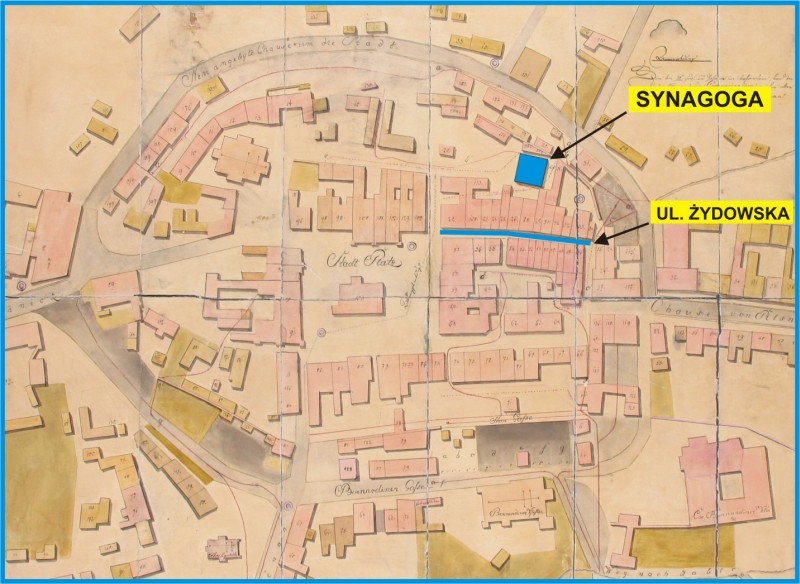 |
| City plan, XVIII c. |
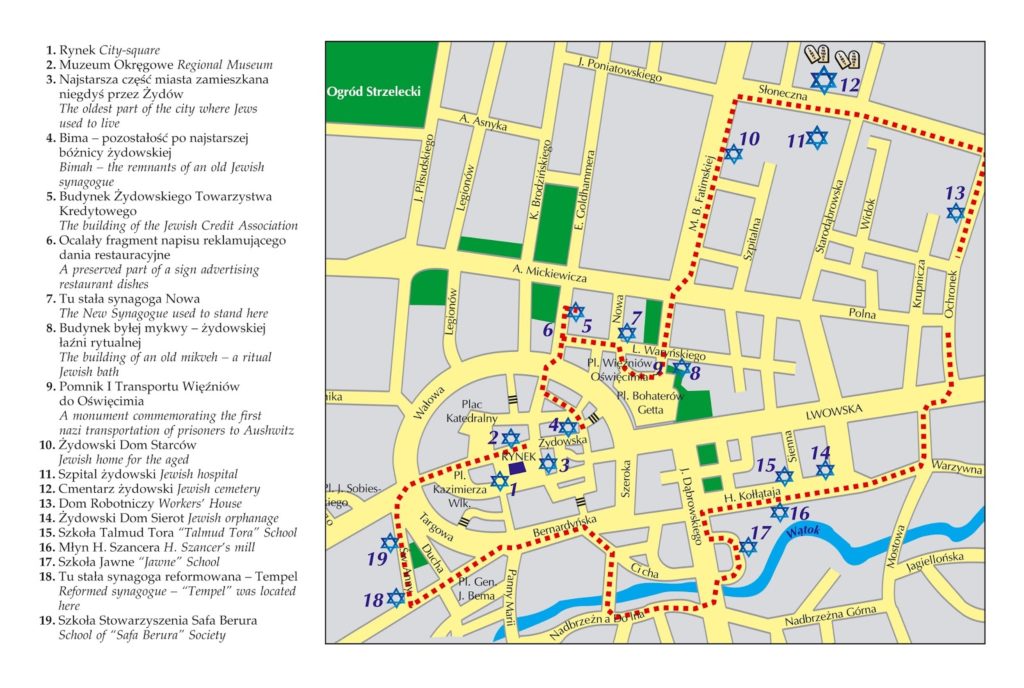 |
| Jewish tour in Tarnów |
 |
| Tarnów Jews, Feast of Sukkot |



